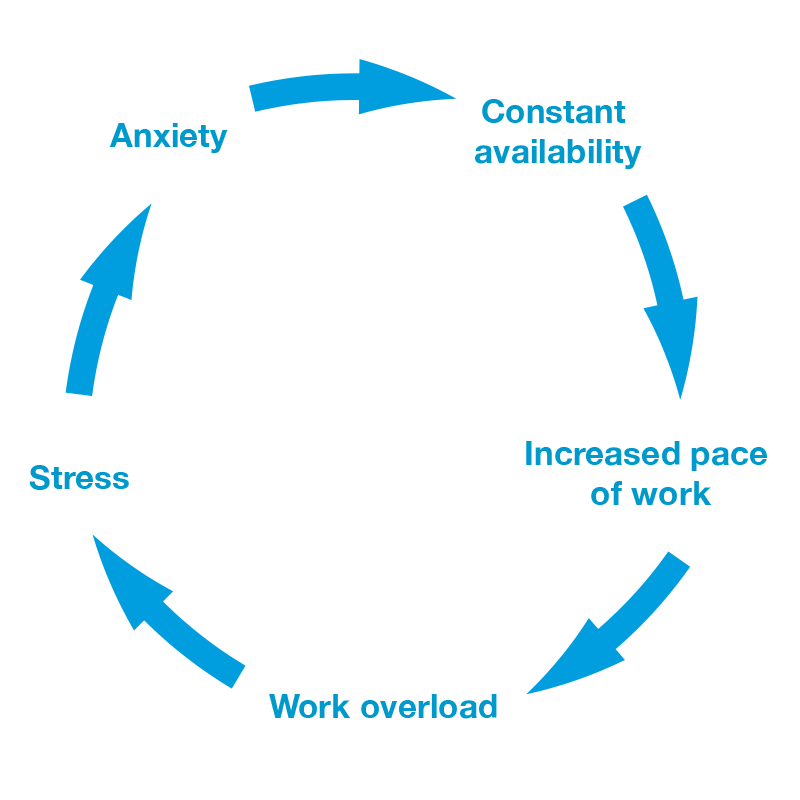The right to disconnect from work
As with all « good things »... without limits, the ability to work remotely can become a « curse ».
Twenty or so years ago, access to communication technologies meant that, for the few who had access to them (most of whom were managers), it was possible to work more flexibly in terms of time and place, and therefore to achieve a better work-life balance.
With the development of the 24/7 global economy, the widespread use of portable computing tools in the workplace and the use of information storage in the cloud, the boundaries between work and private time have become increasingly blurred. So much so that today, some twenty years later, the legislator must intervene with a law protecting employees from hyper-connectivity and committing employers to defining clear frameworks.
|
Since 23 June 2023, Article 312-9 of the Luxembourg Labour Code states that |
Why should we be concerned ?
Working with new technologies can contribute to the development of a number of negative effects on the mental and physical health of the individuals who use them : it can contribute to the risk of stress and burnout, as well as triggering or aggravating musculoskeletal disorders and increasing the risk of cardiovascular disease and diabetes... All this will impact not only on the employee’s quality of life but also on the quality of relationships at work and organisations as a whole.
The main reasons for these developments seem to stem from the way technology is used (its use is not in itself a harmful activity), but prolonged use is a major factor in technostress and techno-addiction. For example, the ability to check email on a smartphone after working hours is not in itself harmful, but the expectation that an employee will do so may be.
Why are we hyper-connected ?
| Irregular working hours (shift work, global teams, etc.) | Short lead times | High workload / lack of resources |
| Lack of clarity (role/function, intended use of tools) | Example given by leadership | Loyalty to the team |
| High level of personal commitment | Fear of not being able to do the job | Fear of sanctions |
Systemic and individual reasons for hyperconnectivity.
What can managers do for their teams ?
|
Informing about risks |
|
Clearly define and communicate work/rest time limits |
|
Managing work-related problems in different time zones |
|
Define clear rules for use in emergencies |
|
Be creative : a day without the Internet, a moment of tranquillity, old-school team meetings, etc. stimulate motivation and creativity |
What can I do myself ?
- Monitor and measure the impact of hours spent at home on work-related electronic devices :
- On your sleep ;
- Pain in the hands, neck and back ;
- Do you perceive a reduction in the work-life balance - do your friends and family make comments about your use of the smartphone or your late working hours ?
- Talk about it with your colleagues and your line manager ;
- Set yourself reminders to shut down / put aside devices ;
- Seeking professional help for symptoms of burn-out.
Why is this important ?

Technostress and techno-addiction develop when the various factors that make up hyperconnection form a vicious circle with serious effects on physical and mental health !
|
The ASTF has developed a training course to raise awareness of this subject, the risks to physical and mental health and possible solutions for individuals and teams. Please do not hesitate to contact us if you are interested. |

